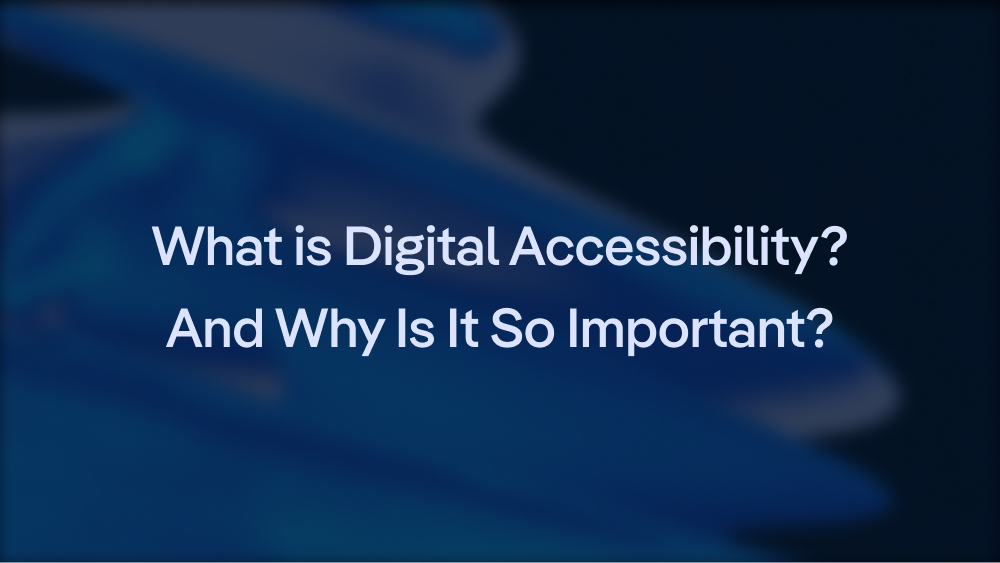What is Digital Accessibility – And Why Is It So Important?

Digital accessibility means designing and developing websites, apps, and digital tools so that all users – regardless of their physical or cognitive abilities – can use them independently.
This includes:
- Blind and low-vision users
- Deaf and hard-of-hearing users
- People with limited motor control
- Users with learning difficulties, neurodivergence (e.g., ADHD, autism)
- Elderly people or people experiencing temporary limitations (injuries, fatigue)
But accessibility benefits more than just people with disabilities. Clearer design, faster navigation, better structure – everyone wins.
Why Does Digital Accessibility Matter?
1. Because inclusion is a right
Over 1 billion people worldwide live with a disability. If your website isn’t accessible, you’re not just missing out on potential users – you’re excluding them. Accessibility is an ethical and social responsibility.
2. Because it improves UX for everyone
Accessible websites are better structured, more consistent, and easier to use. Features like readable fonts, clear navigation, and keyboard support create a smoother user experience for all.
3. Because it grows your audience
A user who can’t use your site won’t buy from you. Simple as that. Accessibility ensures more people can interact, engage, and convert – which directly impacts your business success.
4. Because it helps your SEO
Search engines favor clean, semantic, and well-structured websites. Accessibility best practices lead to:
- Better indexing
- Higher relevance
- More engagementThat means better rankings and more organic traffic.
5. Because laws are catching up
Regulations around web accessibility (like WCAG, ADA, or the EU Accessibility Act) are increasing. Starting early helps you avoid last-minute fixes and possible legal issues later.
How To Make Your Website Accessible
- Use alt text for every image
- Ensure high contrast ratios
- Use semantic HTML with clear heading hierarchy
- Enable keyboard navigation for all features
- Avoid jargon – write in plain language
- Provide captions and transcripts for media content
Optionally, consider integrating an accessibility widget that gives users control over contrast, font size, text-to-speech, and more. It's a helpful layer of personalization and inclusion.
Final Thoughts
Accessibility is not a checkbox – it’s a commitment. One that makes your brand more inclusive, more visible, and more future-ready.
An accessible website is a better website – for everyone.
Ready to Make Your Website More Accessible?
Start using Usermate today and offer a better experience for every visitor — with powerful features, easy integration, effortless setup, and full customization at an unbeatable price.

